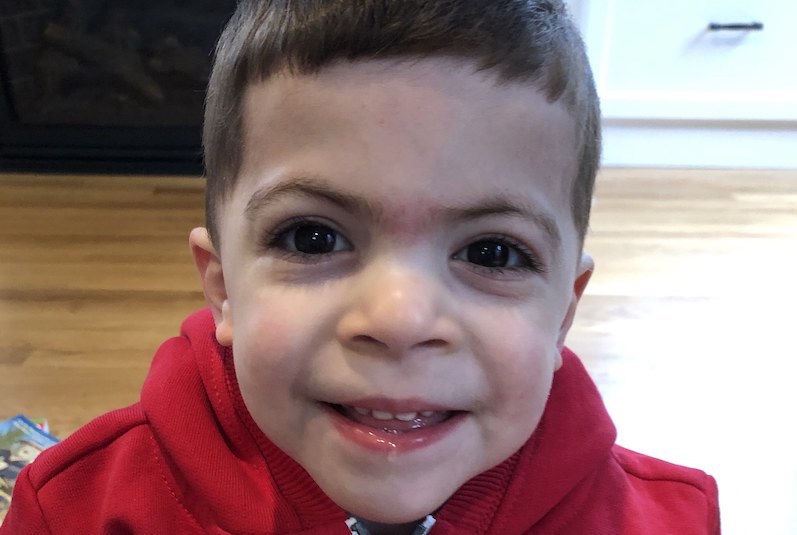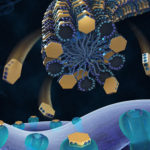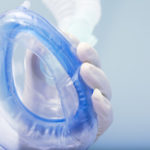Partnering with families to minimize exposure to anesthesia

In medicine, the best imaging can mean the difference between the right diagnosis and the wrong one. A successful treatment and an ineffective one.
The radiology team at Boston Children’s Hospital carries out more than 200,000 imaging exams on children each year. Ranging in length from five minutes to two hours, all MRI scans require children to lie completely still to ensure the very best image is captured. And because kids aren’t wired to be still, many children have to be sedated during imaging. Anesthesia requires fasting, prep time and recovery time, and can add stress to an already difficult situation.
The Try Without Program
More than a decade ago, the radiology team at Boston Children’s began offering families the chance to try having their child undergo an MRI without anesthesia. “While anesthesia is safe for most patients, it does require the use of a medication and, as with any medication, we would like to avoid giving it whenever possible,” says Dr. Richard L. Robertson, radiologist-in-chief.
“I experienced first-hand the level of patient care that makes Boston Children’s the leading hospital for our little ones. Continually seeking opportunities to improve the lives of children, the staff made us feel that my son and his success with a non-sedated MRI was just as important to them as it was to me.”
~ Blanca, mom to David
After the pilot program showed that most children could undergo an MRI scan successfully with proper preparation and distraction, the Try Without Program was formalized in 2016. Today, only 15 percent of MRI patients at Boston Children’s receive anesthesia, compared to the national average of 30-40 percent. “It’s so exciting,” says Erin Migausky, manager of Operations Improvement in the Boston Children’s Department of Radiology. “Families love the program; we love the program. The whole hospital is behind the effort.”
How ‘Try Without’ works
Infants up to 5 months old are arguably the easiest to keep still, so families are encouraged to simply swaddle, feed and soothe their child during the appointment. Once the child has fallen asleep naturally, the MRI is almost always a success.
Babies and toddlers tend to be the toughest group to keep still, yet the success rate is still high, at 70 percent. This is due in large part to program coordinator Kellyn Mahan’s close partnership with families. “Families are the best judge of a child’s character,” says Mahan. “If they decide their son or daughter can try without anesthesia, we work together to give the child the best chance of succeeding.”
In the weeks leading up to the appointment, Mahan instructs families to talk about the MRI machine and repeatedly mimic the experience at home together — by playing the MRI sound and wearing ear putty and muffs. Mahan offers 9 p.m. appointments so she can replicate each individual child’s bedtime routine at the hospital with familiar lighting, music and sleeping arrangements. Families can talk or sing to their child and can even ride along on the MRI bed for extra cuddles. “I had one parent who sang nonstop for a half hour to his son,” says Mahan. “These parents are just amazing; they’re so dedicated to getting the scan done without anesthesia.”

Kids between ages 4 and 7 have the highest rate of success at 93 percent — so high, in fact, that the majority of children this age are offered “try without” appointments. Child life specialist Jessica Perry finds involving kids early on helps them feel prepared and confident. She sends home educational materials in advance and lets the child play with a toy MRI scanner and a stuffed animal on the day of the appointment.
“Throughout his life, our 6-year-old son has endured countless surgeries that many children will never have to face. To be contacted before a surgery and given the option to try a CT scan without anesthesia means one less hospital stay for my son.”
~ Juliette, mom to Charlie
“This type of play helps the child take control of the situation and helps reduce anxiety,” says Perry. “We also use a variety of techniques to help children lie still. They love listening to music or watching videos with our special goggles and headphones.”
From MRIs to CT scans: Building on success
Dr. Robertson is dedicated to lowering the rate of anesthesia use even further. In the past few months, the Try Without Program has expanded to include other types of imaging, such as CT scans. “Our state-of-the-art CT scanners can image an entire body region in less than half a second, allowing most patients to be imaged without anesthesia,” says Robertson.

The team’s efforts have paid off. The percentage of patients at Boston Children’s who received anesthesia for CT scans in 2018 was 8 percent and that number is expected to drop even further in 2019. “We’re really pioneering in this area but are more conservative than we are with MRIs because we don’t want to risk having to repeat imaging and expose a child to a second dose of radiation,” says Robertson.
It takes a team
To maximize each child’s chance of success, each member of the Try Without team — from program managers, schedulers and nurses to child life specialists, technologists and radiologists — work together to provide an individualized experience.

The team also works closely with Boston Children’s researchers to continue to shorten imaging protocols and adopt techniques like Turboflash, which captures seven types of scans in only two tenths of a second each — opening up more and more opportunities to offer imaging without anesthesia.
Learn more about our Department of Radiology.
Related Posts :
-

The people and advancements behind 75 years of Boston Children’s Cardiology
Boston Children’s Department of Cardiology has more than 100 pediatric and adult cardiologists, over 40 clinical fellows learning the ...
-

A bio-inspired approach to delivering local anesthetics
Site 1 sodium channel blockers such as tetrodotoxin and saxitoxin are small-molecule drugs with powerful local anesthetic properties. They provide pain ...
-

What parents should know about anesthesia
The prospect of surgery can be distressing to parents and kids alike, but the idea of a child undergoing anesthesia ...
-

In surgery for people with sepsis, choice of anesthetic may matter
Sepsis, an extreme immune response to infection, has no specific treatment and is a leading cause of hospital deaths. As ...





